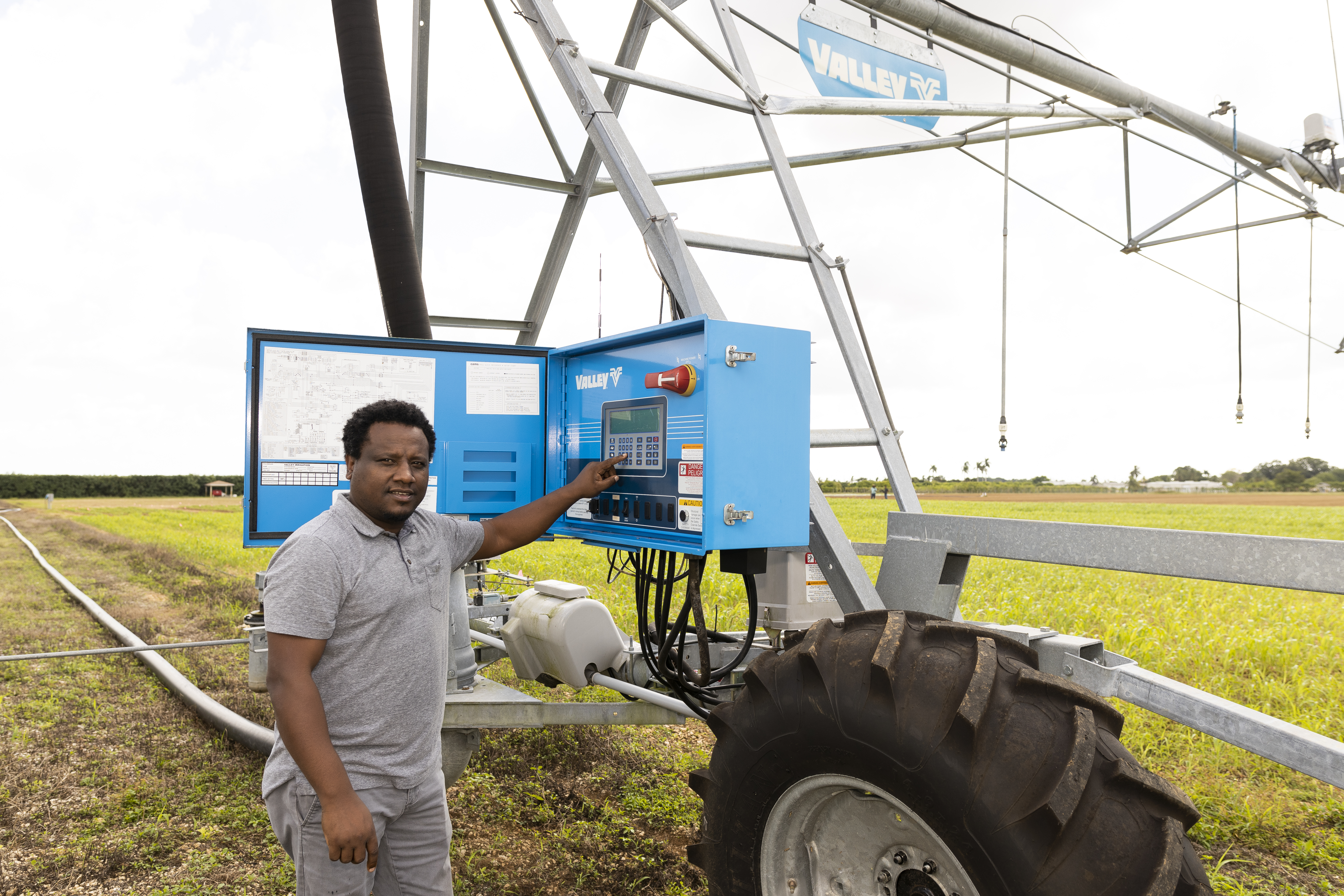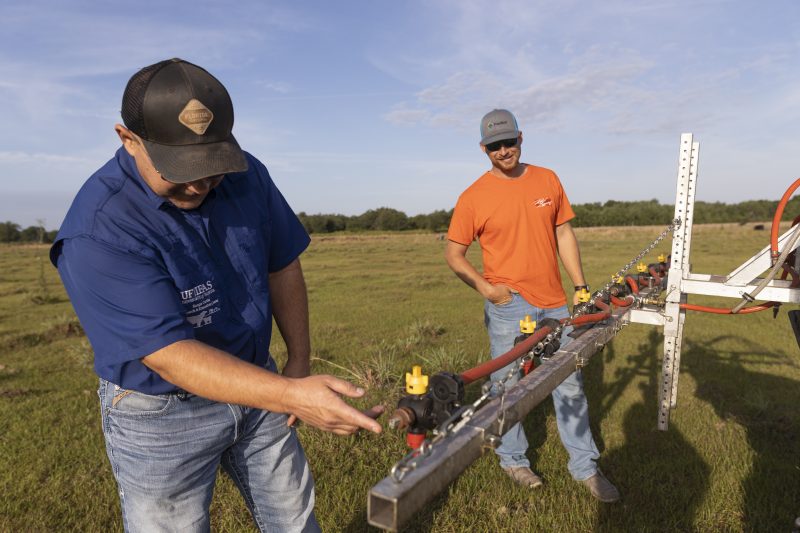
Snow at UF/IFAS Extension 4H Camp Timpoochee in Niceville, Florida. Photo Credit: Cat Wofford, UF/IFAS
To say the least, we had an eventful winter across the Panhandle. Who would have thought in their lifetime we would see more snow than many northern states, 5 inches of snow in many places across the Panhandle, and snow on the Gulf Beaches! As warm weather is upon us and the spring planting time begins, it’s crucial for farmers to ensure their equipment is ready for the demands of the upcoming season. With snow and extended freezing weather this winter, equipment may experience extra weather damage that could cause failures and issues that need extra attention. Proper inspection and maintenance of irrigation systems, sprayers, and other farm implements not only will enhance efficiency, but also prevent costly breakdowns during planting and growing periods.
–
Irrigation Systems: Ensuring Optimal Water Delivery
Irrigation systems are the lifeblood of many farming operations, and their performance directly impacts crop health and yield. To prepare these systems for the season:
- Visual Inspection: Begin by examining all components for visible damage. Look for cracks, leaks, or wear in pipes, hoses, and connectors. This spring you will need to pay extra attention to areas where snow and ice accumulated on irrigation systems that could have compromised the hoses and connectors on the system.
– - Clean Filters and Nozzles: Sediment and debris can accumulate over time, leading to blockages. Remove and clean filters and nozzles to ensure unobstructed water flow.
– - Test Water Pressure: Verify that the system maintains appropriate pressure levels. Inconsistent pressure can indicate leaks or pump issues.
– - Check for Uniform Coverage: Run the system and observe the water distribution. Uneven coverage may necessitate nozzle adjustments or replacements.
– - Inspect Electrical Components: For systems with electronic controllers or timers, check for corrosion or damage to wiring and connections. Replace any compromised components.
–
UGA Extension Precision Ag and Irrigation Specialist, Wesley Porter put together a checklist of items to look for on your pivot to ensure it is ready for the season and it can be found here: Spring Center Pivot and Lateral Irrigation System Preparation. If you find issues and need help with your irrigation system, contact the FDACS Mobile Irrigation Lab that serves your region. In the Panhandle, call Rex Patterson – 850-482-1240 or email: Rex.Patterson@FDACS.gov
–
–
Sprayers: Achieving Precise Application
Sprayers play a pivotal role in applying fertilizers and pesticides. Ensuring their proper function is essential for effective and safe application:
- Clean the Tank and Lines: Residual chemicals can corrode equipment and contaminate future applications. Thoroughly rinse the tank, hoses, and nozzles with appropriate cleaning agents.
– - Inspect Nozzles and Filters: Clogged or worn nozzles can lead to uneven spray patterns. Clean or replace them as needed, and check filters for debris.
– - Check solenoids for boom shutoff for any clogging, crystalizing, leaks etc.
– - Examine Hoses and Seals: Look for cracks, leaks, or brittleness in hoses and seals. Replace any components showing signs of deterioration.
– - Test Pressure Gauges and Controls: Ensure that gauges provide accurate readings and that control valves operate smoothly.
– - Calibrate the Sprayer: Accurate calibration ensures the correct amount of product is applied. Follow manufacturer guidelines or consult extension resources for calibration procedures.
–
General Farm Implements: Readiness for the Field
Beyond irrigation and spraying equipment, other farm implements require attention to function optimally:
- Lubricate Moving Parts: Apply appropriate lubricants to bearings, chains, and other moving components to reduce friction and prevent wear.
– - Check Tires and Wheels: Inspect for proper inflation, tread wear, and any signs of damage. Tighten the lung nuts and replace tires if necessary.
– - Inspect Hydraulic Systems: Look for leaks in hoses and fittings, and ensure hydraulic fluids are at recommended levels.
– - Test Safety Features: Verify that safety guards, shields, and emergency stops are in place and functioning correctly.
– - Review Operator Manuals: Familiarize yourself with manufacturer maintenance schedules and recommendations for each piece of equipment.
–
Maintaining detailed records of inspections, maintenance, and repairs can aid in tracking equipment performance and scheduling future service. Document dates, observations, and actions taken for each piece of equipment.
For comprehensive guidance tailored to your specific equipment and regional conditions, consider consulting resources provided by the UF/IFAS Extension. Reach out to your local UF/IFAS County Extension Office to contact an agent in your area to assist with calibration and help connect you to resources for equipment repairs.
By dedicating time to thoroughly inspect and prepare your farm equipment in the spring, you set the stage for a productive and efficient growing season for 2025. Proactive maintenance not only safeguards your investment but also contributes to the overall success of your agricultural endeavors. As they always say, “an ounce of prevention is worth a pound of cure!”
- Managing Wild Hogs in theFlorida Panhandle: Strategies for Farmers and Landowners - October 24, 2025
- 2025 Small Ruminant Grazing Field Day – November 5 - October 3, 2025
- After an Eventful Winter, Inspect and Prepare Equipment for the Growing Season - April 11, 2025


